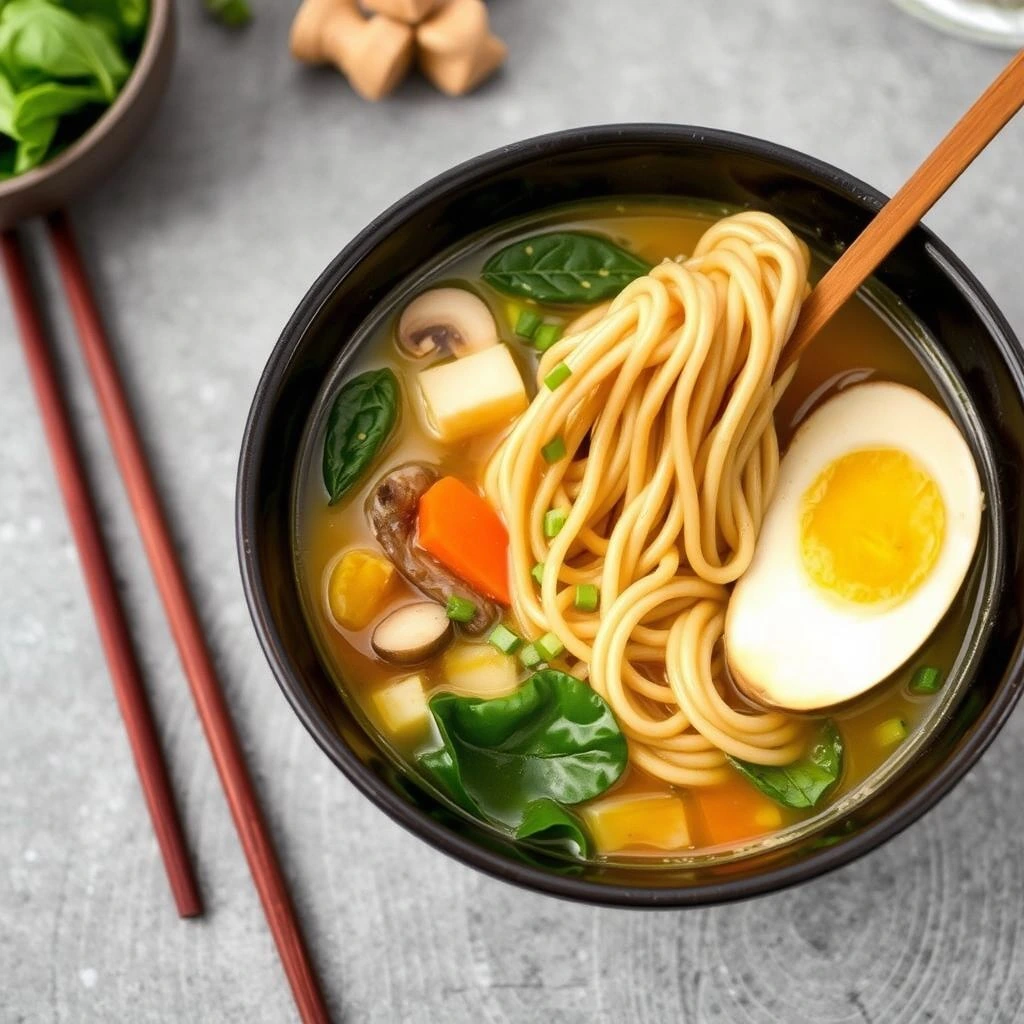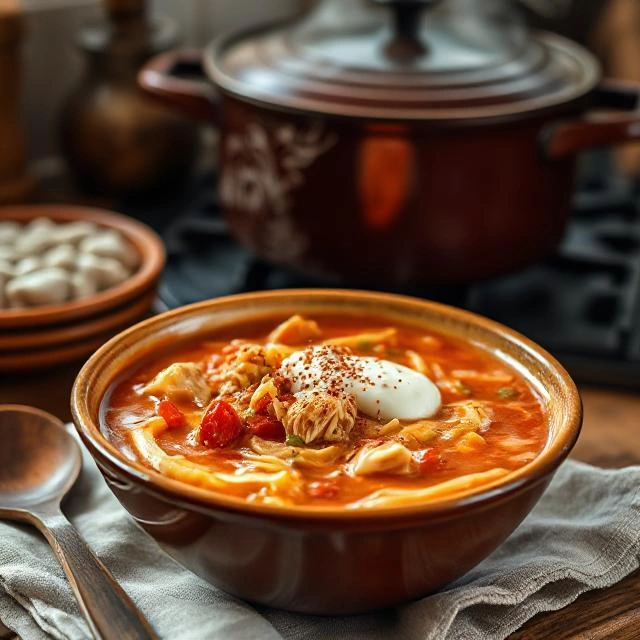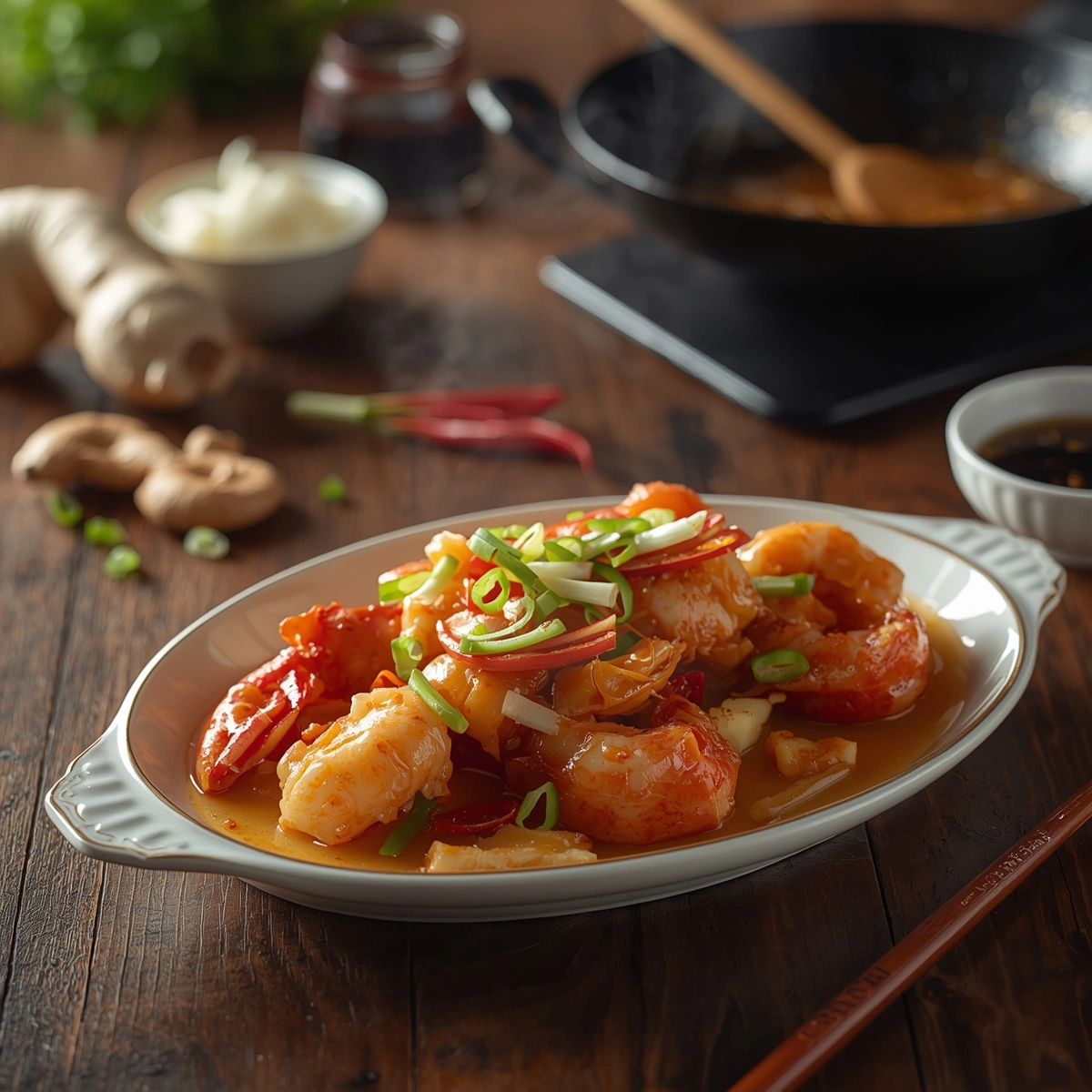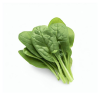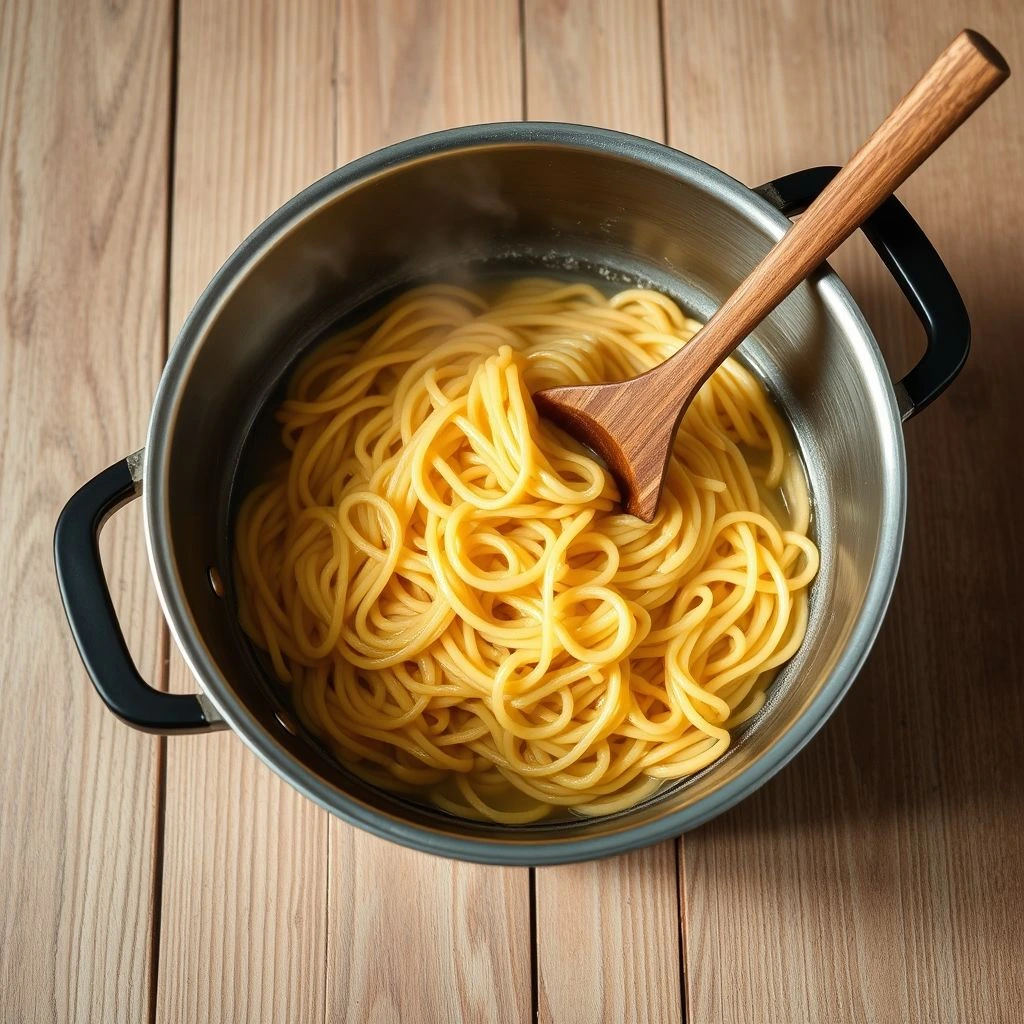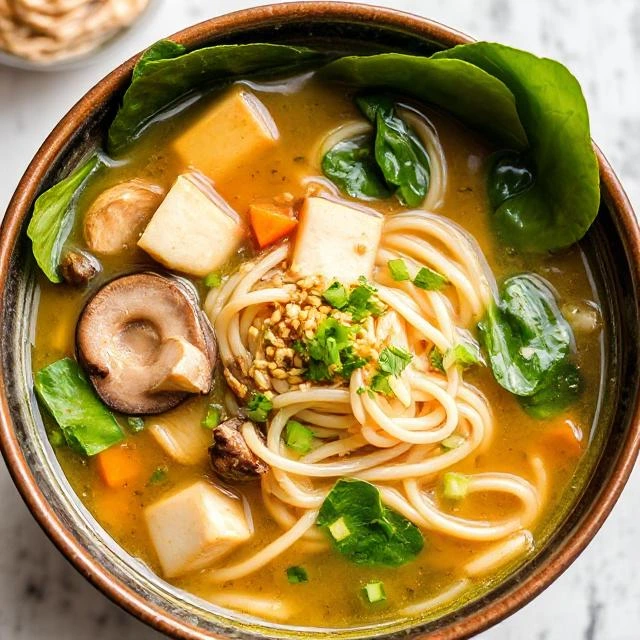Discover how to make miso noodle soup at home! This easy recipe is packed with umami flavor, fresh vegetables, hearty noodles, and protein, making it a perfect meal for busy weeknights or cozy weekends. Learn step-by-step instructions, expert tips, nutrition facts, and delightful variations for every taste and dietary need.
Why You Will Love This Recipe
If you’ve never tried making miso noodle soup at home, you’re in for a treat. Here’s why:
- It’s comforting: The warm broth, chewy noodles, and flavorful toppings make this a soul-soothing bowl.
- Customizable: Swap in your favorite veggies or protein to suit any taste or diet.
- Nutrient-rich: Miso delivers probiotics, veggies add fiber and vitamins, and there’s room to boost protein.
- Fast and easy: On the table in about 30 minutes with simple, straightforward steps.
- Affordable: Everyday ingredients create a restaurant-worthy meal.
Ingredients
- 6 cups vegetable broth (or low-sodium chicken broth)
- 3 tablespoons white or yellow miso paste (use gluten-free if preferred)
- 200g dried ramen, udon, or soba noodles
- 1 tablespoon soy sauce (or tamari for gluten-free)
- 2 teaspoons sesame oil
- 1 cup sliced mushrooms (shiitake or cremini recommended)
- 1 cup baby spinach or bok choy
- 1/2 cup firm tofu, cubed (or shredded chicken/tempeh)
- 1 medium carrot, thinly sliced
- 1 clove garlic, minced
- 1-2 green onions, sliced
- 1-inch knob fresh ginger, minced
- 1 tablespoon toasted sesame seeds (optional)
- Fresh chili or chili oil (optional, for heat)
- Salt and pepper to taste
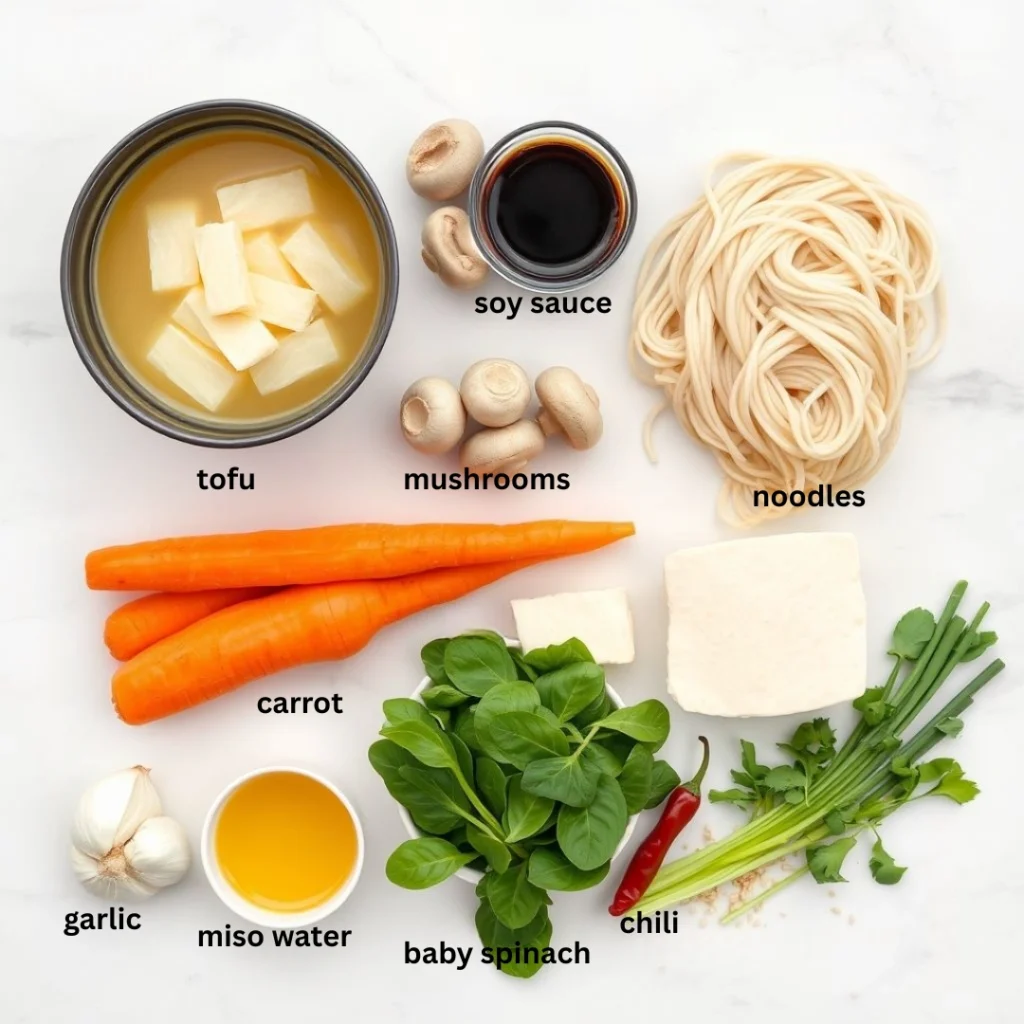
How to Make (Step-by-Step)
- Prepare the ingredients: Slice the vegetables, cube the tofu, and mince the garlic and ginger. Set everything out for easy assembly.
- Start the broth: In a large pot, heat sesame oil over medium heat. Add garlic, ginger, and mushrooms, sautéing until fragrant and mushrooms begin to soften (about 3 minutes).
- Simmer and flavor: Pour in the broth and bring to a low simmer (do not boil, as miso loses nutrients at high heat). Add carrots and tofu; cook for 5-7 minutes until veggies are just tender.
- Boil the noodles: In a separate pot, cook noodles per package directions until just al dente. Drain and set aside.
- Incorporate miso: Ladle a cup of hot broth into a small bowl. Whisk in the miso paste to dissolve, then return this mixture to the main pot and gently stir. Add soy sauce and season to taste.
- Finish the soup: Stir in spinach or bok choy and green onions, letting them wilt in the hot broth for a minute. Taste and adjust seasonings.
- Assemble: Divide the cooked noodles among four bowls. Ladle the hot miso broth and veggies over the noodles.
- Garnish and serve: Sprinkle with sesame seeds, add chili oil if using, and enjoy right away!
Expert Tips
- Miso matters: Add miso after turning off the heat or with the pot off the boil for best flavor and nutrition.
- Prep ahead: Prepare all toppings before you start to keep the process smooth.
- Noodle swap: Try soba for extra fiber or gluten-free noodles if needed.
- Protein choice: Swap tofu for tempeh, soft-boiled egg, cooked chicken, or edamame for different nutrients/texture.
Recipe Variations
- Spicy Miso Soup: Whisk in chili paste or add chili oil to the finished broth.
- Seaweed Boost: Add a handful of wakame or nori strips for extra umami and minerals.
- Vegan-Friendly: Use vegan-friendly miso and broth, load up on tofu and extra vegetables.
- Hearty Winter Soup: Toss in winter squash, sweet potatoes, or extra mushrooms for a heartier bowl.
- Gluten-Free Option: Use rice noodles and tamari.
Storage and Reheating
- Fridge: Store leftover broth, noodles, and toppings separately in airtight containers. Eat within 3 days.
- Reheating: Warm broth gently over low heat and add noodles just before serving to avoid mushy texture.
- Do not freeze: Miso and noodles can become grainy/slimy upon thawing.
Serving Suggestions
- Serve with a side of steamed edamame, a fresh cucumber salad, or crispy roasted seaweed.
- Pair with Japanese pickles for crunch and balance.
- Add a sprinkle of furikake or extra scallions for Broadway flair.
Description
Discover how to make miso noodle soup at home! This easy recipe is packed with umami flavor, fresh vegetables, hearty noodles, and protein, making it a perfect meal for busy weeknights or cozy weekends. Learn step-by-step instructions, expert tips, nutrition facts, and delightful variations for every taste and dietary need.
Ingredients
Instructions
-
Prepare the ingredients
Slice the vegetables, cube the tofu, and mince the garlic and ginger. Set everything out for easy assembly.
-
Start the broth
In a large pot, heat sesame oil over medium heat. Add garlic, ginger, and mushrooms, sautéing until fragrant and mushrooms begin to soften (about 3 minutes).
-
Simmer and flavor
Pour in the broth and bring to a low simmer (do not boil, as miso loses nutrients at high heat). Add carrots and tofu; cook for 5-7 minutes until veggies are just tender.
-
Boil the noodles
In a separate pot, cook noodles per package directions until just al dente. Drain and set aside.
-
Incorporate miso
Ladle a cup of hot broth into a small bowl. Whisk in the miso paste to dissolve, then return this mixture to the main pot and gently stir. Add soy sauce and season to taste.
-
Finish the soup
Stir in spinach or bok choy and green onions, letting them wilt in the hot broth for a minute. Taste and adjust seasonings.
-
Assemble
Divide the cooked noodles among four bowls. Ladle the hot miso broth and veggies over the noodles.
-
Garnish and serve
Sprinkle with sesame seeds, add chili oil if using, and enjoy right away!
Nutrition Facts
Servings 4
Serving Size 4
- Amount Per Serving
- Calories 320kcal
- % Daily Value *
- Total Fat 7g11%
- Saturated Fat 1g5%
- Total Carbohydrate 54g18%
- Dietary Fiber 5g20%
- Sugars 5g
- Protein 13g26%
- Vitamin A 700 IU
- Vitamin C 6 mg
- Calcium 120 mg
- Iron 2.2 mg
* Percent Daily Values are based on a 2,000 calorie diet. Your daily value may be higher or lower depending on your calorie needs.
Note
- Adjust broth seasoning as miso brands and broths vary in saltiness.
- Add cooked protein on top if preparing for packed lunches.
- This base soup is a "canvas"—change toppings seasonally or by what’s in your fridge.

